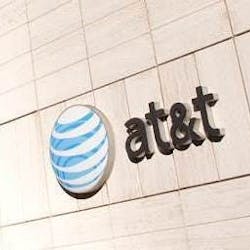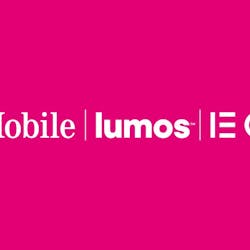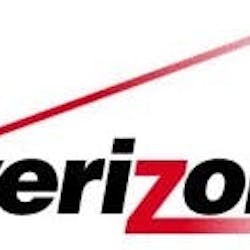The last mile in telecom networking has always been not just the last bit of distance to connect customers, but the biggest and most difficult portion of the network to construct with a reasonable return on investment (ROI). Over the years technology has progressed from dial up to ISDN to ADSL and now fiber. Parallel to this fixed-line development has been a similar evolution in fixed wireless. Starting with 25-kbps systems, extending to hundreds of megabits per second in 5-GHz bands and now delivering 1-Gbps fixed wireless in millimeter-wave (mmWave) bands, wireless has always been chasing wireline in services offered.
In each evolution the goal was to increase speeds while keeping costs flat. With customers now expecting gigabit services, fiber has assumed a critical role in making this possible. As shown in Figure 1, whether wireless or wireline, at some point residential or enterprise CPE or the edge network will connect to a strand of glass:
- DOCSIS 3.1: The latest standard from CableLabs supports 1-Gbps asymmetric service. But the coax cables leaving the customer’s house are quickly terminated into a “point of presence” with a fiber connection. This is often referred to as hybrid fiber/coax (HFC) but is now part of the fiber to the curb or node architecture (FTTC or FTTN)
- ADSL: Again, a technology that is designed to run on existing or upgraded copper infrastructure and offers services as high as 24 Mbps. xDSL technologies largely use the twisted-pair cables. All of these copper lines run eventually (oftentimes within 1000 feet) into a DSLAM which, you guessed it, has a fiber connection for backhaul. Very much an FTTN design.
- PON: Here the wireline networks go full glass. PON is used extensively to bring passive fiber connections to the residential and business market. This qualifies as fiber to the home or premises (FTTH or FTTP).
These can all be summarized by the simple acronym – FTTX or fiber to the X as depicted in Figure 1 below. The reason for these various configurations is the cost of deploying new fiber is high. If the service provider can avoid having to lay that last 1000, 100 or even 10 feet of fiber by using existing telecom infrastructure, be it twisted pair or coax, the savings can be substantial. For the case of FTTH, this is typically planned well in advance and accepts the fact that the ROI may be many years, but has the upside of a tangible asset in the ground – fiber.
Fiber and mmWave Wireless
In an access network when the “X” is the building or home, wireless has a strong value proposition as a way to reach that last ”X” over many feet. Fixed wireless has been delivering 100 Mbps in these applications for years. But as the market demand for speed grows, with many demanding 1-Gbps service, most wireless technologies – including LTE and 5-GHz systems – fall short. Only mmWave systems can offer 1 Gbps and up. And while 5G will have the required capacity for gigabit access services, the business metrics of offering fixed services vs. mobile services (in terms of cost and ARPU) will drive the MNO to use 5G in the primary application for which it will be originally intended – serving your mobile phone.
For a hybrid fiber/wireless network to give end users fiber-level performances, the wireless portion must run in mmWave – 28 GHz and up. In most countries, however, 28 GHz and even 38 GHz are licensed bands. Carriers spend large amounts of money in auctions to purchase such spectrum, which means they are both not affordable to most telcos and likely not available.
However, there is another set of frequencies where mmWave systems can act as the “last mile” for fiber network extension and do it with no loss in performance: 60 and 70/80 GHz. Advantages of using mmWave systems at these frequencies include:
- a large ecosystem of suppliers
- network equipment can be deployed in days
- systems operate in bands that are open to all with 24 GHz of spectrum
- delivers 1 Gbps and up to 10 Gbps full duplex
- mature and proven with thousands of deployments to date
- very small footprint and easy-to-install CPE
- proven ROI metrics for service providers.
mmWave in Action
There are many misconceptions about mmWave, including weather and range. For a properly installed E-Band product, ranges can go as far as 3 miles and still deliver 99.995% availability. Availability is only affected by heavy and persistent rain, and this is accounted for when quoting distances such as 3 miles. Snow, fog -- neither of these affect a 60- or 70/80-GHz system. And with extremely narrow beams, while line-of-site is required, oftentimes these beams can be aimed below foliage or between buildings.
These hybrid fiber wireless networks with mmWave components are used extensively in delivering last-mile access to the enterprise, the office building, multiple dwelling units (MDUs) and single-family homes. Beyond access, these networks are being deployed globally as part of the push for smart cities as well.
Many smart city applications such as 4K video surveillance and public Wi-Fi backhaul require hundreds if not gigabits of connectivity. Rather than run or extend fiber to every camera location and every train station or park bench, mmWave wireless provides simple, cost-effective and secure communications form the end device to the fiber point-of-presence.
While fiber has been around for a while, complementary wireless networks that can extend “gigabit to the X” that last few feet are a more recent introduction. mmWave systems operating in the 60- and 70/80-GHz bands are the ideal solution for bringing that fiber-like performance to the front door at dramatically lower costs.
David A. Sumi is vice president of marketing at Siklu Communications.






